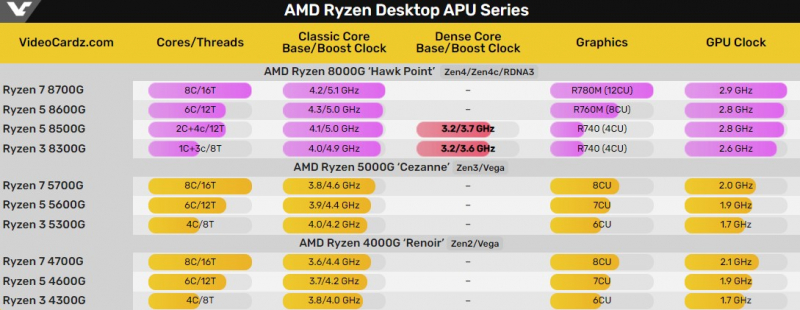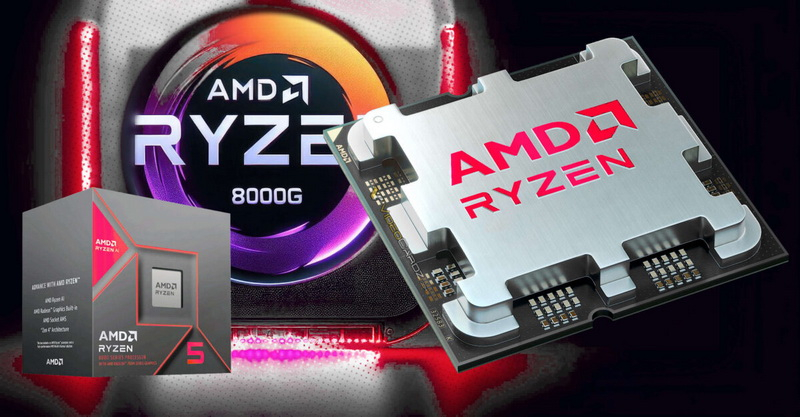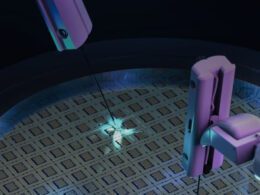AMD has kept its promise and released comprehensive specifications of hybrid processors Ryzen 8000G, including the clock frequencies of their Zen 4c cores. This information was missing from the promotional materials at the time of the announcement.
Two Types of Cores in Ryzen 8000G Processors
Lower-end Ryzen 8000G processors encompass two sets of cores: Zen 4 and Zen 4c (an energy-efficient variant). These small Zen 4c cores are used more actively under light system loads. Unlike Intel’s E-cores, AMD’s economical cores support multithreading. The processors with two types of cores include Ryzen 5 8500G and Ryzen 3 8300G. The energy-efficient cores in the Ryzen 5 8500G operate at a base frequency of 3.2 GHz and can automatically overclock to 3.7 GHz. The main Zen 4 cores of this processor range from 4.1 to 5.0 GHz. On the other hand, the Zen 4c and Zen 4 cores of Ryzen 5 8300G run at a base and boost frequency of 3.2 GHz and 3.6 GHz, and 4.0 to 4.9 GHz, respectively.

Optimal Memory for These Processors
AMD has suggested DDR5-6000 memory modules as an optimal choice for Ryzen 8000G processors, although the official specifications mention support for memory up to 5200 MT/s. AMD’s Technical Marketing Director, Don Waligroski, confirmed this in an interview with PCWorld. Intriguingly, even faster DDR5-6400 memory was used for internal testing of Ryzen 8000G by the company.
Main Purpose of Ryzen 8000G
The primary target of Ryzen 8000G hybrid processors is to provide users with an optimal CPU and GPU performance balance, enabling the construction of systems without discrete video cards. High-end Ryzen 8000G models come with integrated graphics based on the RDNA 3 architecture, which delivers performance comparable to desktop GeForce GTX 1650.

Pricing and Availability
The flagship Ryzen 7 8700G is priced at $329, whereas the Ryzen 5 8600G and Ryzen 5 8500G are priced at $229 and $179, respectively. The Ryzen 3 8300G will be sold only as part of pre-built PCs. All these processors will be available starting January 31.





